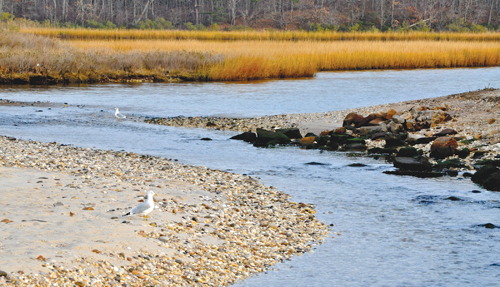Guest Column: A road map for Goldsmith Inlet decision

The significant issues surrounding Goldsmith Inlet in Peconic have led me to question the process of analysis and decision-making that has been in use to this point. I believe that if the community can focus on and accept the dynamic of a formal decision-making process rather than on the tactics of possible solutions, it will be able to arrive at a decision regarding the future of the inlet. Accordingly, this column is not about the various positions in this debate. My hope is that the community will be able to unlock the current impasse, because the heart of this issue is that the pond is dying.
I count maybe seven or more possible solutions for the pond: build a second jetty, shorten the existing jetty, eliminate the jetty, lengthen the jetty, do nothing, only address all natural and unnatural pollutants and various dredging solutions. And there are many permutations of these options. Therefore, the pros and cons of the variables must be parsed, and they fall into two categories: physical and biological.
Some of the physical variables are tide cycles and jetty effect, the characteristics of how the pond flushes, the depth of the pond, salinity and upland drainage and/or runoff. In addition the effects of storms, climate change and dredging must be added to this mix.
The biological variables are pathogen levels and both natural and unnatural pollutants. According to DEC records, the inlet generally has high coliform bacteria levels. However the records also state that insufficient data are available to determine the exact cause and effect of each point and non-point pollution source.
And that’s a problem. Insufficient data lead us to speculation — of which there is no shortage. For example, information on the possible impact of invasive plants, most alarming being the mile-a-minutes vine on Autumn Lake, lead residents to draw conclusions about how the vine threatens the inlet.
The third dimension of this decision matrix is the combination of human preferences and biases. The preferences of homeowners and the public run strong. Some residents and members of the public have concerns about the future of beach recreation, and of course the human danger presented by polluted waters. Others believe that nature should be left to take its course, and therefore to them, concerns about cost containment and tax hikes are moot.
The scope of possible solutions and their variables, makes the constraints under which eDesign Dynamics conducted their assessment too narrow to serve as the dominant analysis on which to base a decision. The computer model, DYNLET is a powerful model for assessing coastal problems, yet it is obviously not designed to model all variables. Consequently eDesign answered many questions from the community by saying, “we simply don’t know”. Former trustee Peggy Dickerson questioned the wisdom of their modeling a “steady state” by pointing out that the term, “normal dynamic state” should rather be used.
My point is that, unless we can rely on a range of unbiased scientific facts and sociological data to support all possible solutions, positive and negative, we will fall back on coalition-building, analysis-paralysis, groupthink and mythology. In the meantime, the pond slowly dies.
So what are the biases that we need to understand in order to not fall under their influence? Here are some that I have heard:
• The “sunk-cost trap” will bias the decision to not change the jetty. This bias will support the argument for no change. Why throw good money after bad?
• Another bias is the “anchoring bias” — in this case it is the estimated $1.5 million cost of the second jetty. Now, anything less will sound cheap at the price.
• Similarly, a “confirmation bias” would show how the littoral drift and tidal cycles always build sand bars on the facing side of the jetty — and erode the beach on the other side. Yet the geography is never identical, so can that conclusion be drawn?
These and other biases need to be acknowledged as influencers and not discounted. Once all the possible solutions and their variables have been subjected to science and analysis, and the biases have been weighed, the community will need to decide to decide.
So here are my parameters for a decision road map:
• Assess multiple alternatives. In progress, check that.
• Test all assumptions. Put that on the “to do” list.
• Foster vigorous debate and constructive conflict. No problem there — they are alive and well.
• Do not defer too strictly to the experts — question them, hold them accountable.
• Make decisions with a team of equals. There’s work that has to be done here.
• Question whether well-established norms have reached a tipping point — is it time to think outside the box?
• Encourage devil’s advocacy.
• Finally, take a comprehensive perspective on the issue.
Following a decision road map will not only help unlock the impasse, but a similar template for decision-making can also be applied to future complex problems that will arise as the town rides the tides of change.
Geoffrey Wells is a Democratic candidate running for Southold Town Trustee.








